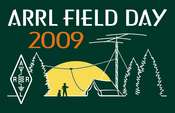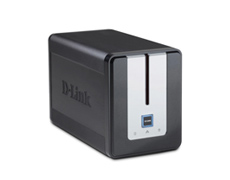 It is snowing now – NWS says we’ll get 2 inches. I am hoping for more. I’ll have to do a bit of shoveling to clear the driveway in the morning, then I’ll head out with the 4 year old for some sledding. Should be a good time, although with the low temps (the high today was 10F) we will have to bundle up a bit. It has been so cold since New Year’s Eve that the wind direction sensor on my Davis Vantage Pro2 has frozen, pointing north.
It is snowing now – NWS says we’ll get 2 inches. I am hoping for more. I’ll have to do a bit of shoveling to clear the driveway in the morning, then I’ll head out with the 4 year old for some sledding. Should be a good time, although with the low temps (the high today was 10F) we will have to bundle up a bit. It has been so cold since New Year’s Eve that the wind direction sensor on my Davis Vantage Pro2 has frozen, pointing north.
I’ve been doing a little configuration work in the shack. I decided to dedicate one of my computers to running my weather station/APRS combo. Before I had the software (Weather Display and UI-View32) running on the same computer I used for my HF work. Things got busy with the log and Ham Radio Deluxe going plus the APRS and weather applications. Moving the weather and APRS applications onto its own computer should give me a bit more stability. I installed a dual boot configuration of Win XP and Ubuntu 9.10. I am initially sticking with Win XP as I know it works well with both Weather Display and UI-View32. My plan is then to migrate to Ubuntu 9.10 and run Xastir and the Linux version of Weather Display. I need to do some googeling and see who else is doing that and see what issues they ran into. I did find and interesting linux application called wview – will definitely explore that. Looks like it is also a replacement for Weather Display Live.
I have a new computer than I am going to dedicate to just HF operations – one of Dell’s new Zino computers. I like the small form factor and I will also install a dual boot configuration to have some fun with both Win XP and Ubuntu.

The old (circa 2005) desktop computer that used to run both the HF ham applications, Weather Display, and UI-View32 has now been moved to another table in the basement and has become the arcade machine. My cool xmas gift was the X-Arcade Tankstick – an amazing arcade controller that is built like an old school arcade console. Along with MAME software I have been able to play some wonderful, classic arcade games: Pac-Man, Galaga, Berzerk!, Robotron, Battlezone, and my favorite – Scramble. The Tankstick also has a trackball, so I have been able to relive the glory of both Missile Command and Centepede as well. I’ve had the four year old behind the joystick playing Frogger – and she did pretty darn good. It is hard to beat the classic arcade games.

The plan for my HF station, based around my Icom IC-7000 is to mount it in two iPortable boxes. The set up will include the IC-7000, a tuner, power supply, and the Dell Zino. If (…when…) I am deployed again, I will be able to have these two iPortable boxes sent out to me. I’ll take some pics as I put the iPortable station together and post it here.




 I have one of the first edition Kindles that I’ve had since last year. Previously I was using the
I have one of the first edition Kindles that I’ve had since last year. Previously I was using the  That’s pretty amazing as the Tolkien books have long resisted being available in digital format. As I’ve said above, I enjoy reading books on the Kindle and it is a huge space saver – but it does not work for me when I am using textbooks. I have found that when I am using a textbook, I need to physically make marks (highlights, underlining, stars, etc.) as well as notes in the margin – it helps me learn the material. Many of the eReaders allow you to make digital annotations… but that is not same (at least for me).
That’s pretty amazing as the Tolkien books have long resisted being available in digital format. As I’ve said above, I enjoy reading books on the Kindle and it is a huge space saver – but it does not work for me when I am using textbooks. I have found that when I am using a textbook, I need to physically make marks (highlights, underlining, stars, etc.) as well as notes in the margin – it helps me learn the material. Many of the eReaders allow you to make digital annotations… but that is not same (at least for me). 
 I have been doing a little more reading on APRS (when I should be working on homework). One item that I found very intriguing was CQSRVR. There is a good run down of that feature
I have been doing a little more reading on APRS (when I should be working on homework). One item that I found very intriguing was CQSRVR. There is a good run down of that feature  It is time to get ready for
It is time to get ready for  I think I have come up with a good home networking storage solution: the D-Link
I think I have come up with a good home networking storage solution: the D-Link  I found an excellent podcast focusing on using linux in support of amateur radio. The show is hosted by Richard, KB5JVB, and Russ, K5TUX. The
I found an excellent podcast focusing on using linux in support of amateur radio. The show is hosted by Richard, KB5JVB, and Russ, K5TUX. The  Ubuntu is a great distribution of linux – setup is quick and painless. However, mounting network drives can sometimes get tricky. Here is a great reference to get through it.
Ubuntu is a great distribution of linux – setup is quick and painless. However, mounting network drives can sometimes get tricky. Here is a great reference to get through it. I have been using my Davis Vantage Pro2 weather station along with the
I have been using my Davis Vantage Pro2 weather station along with the 